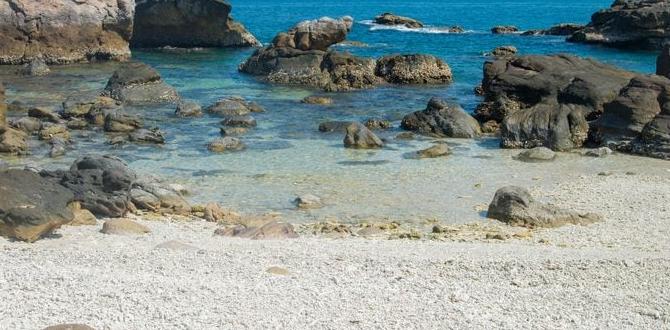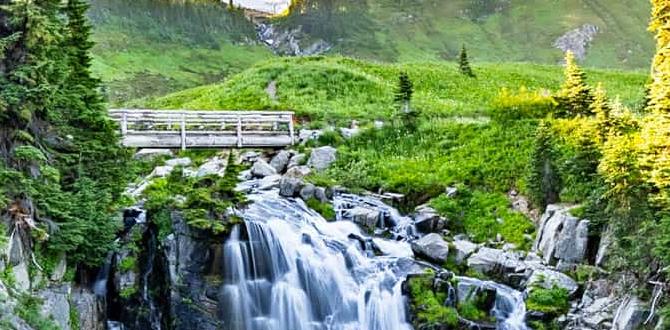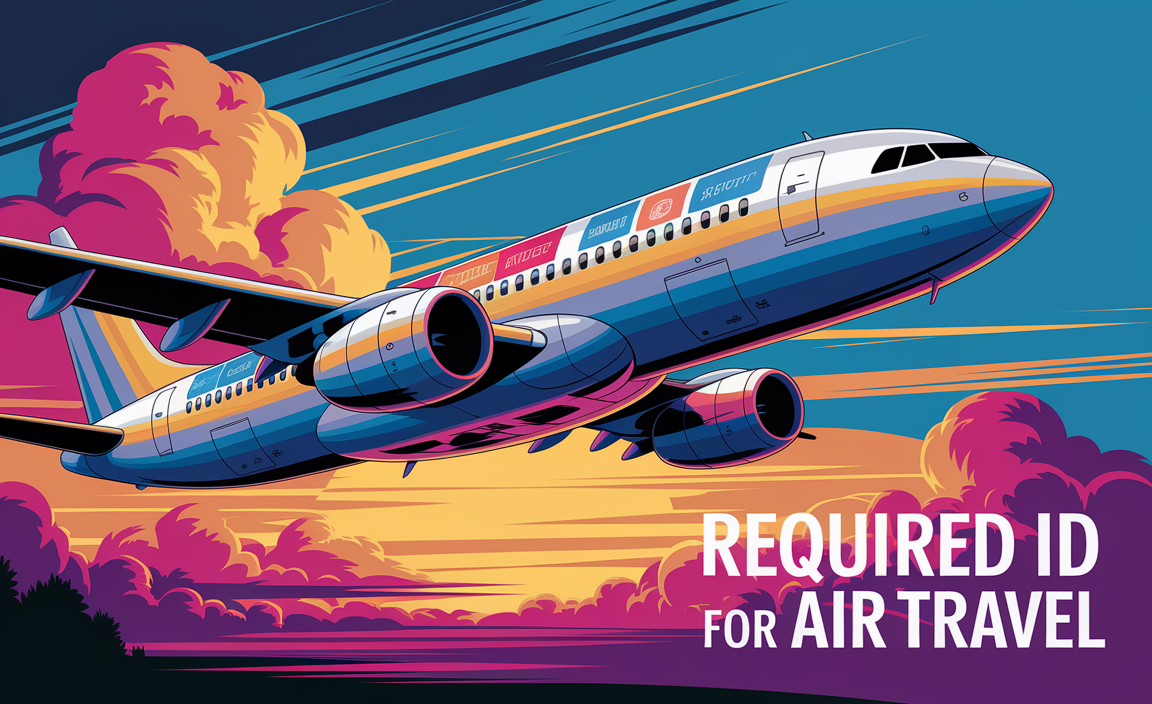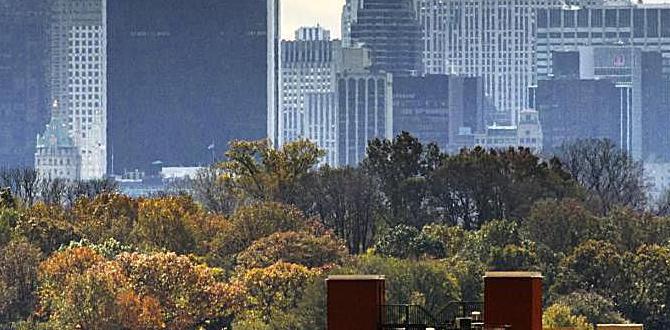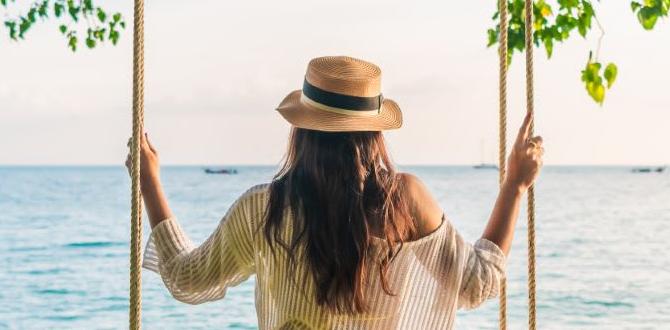Your Atacama Desert first-timers guide should focus on packing light, staying hydrated, and booking tours in advance for a comfortable and unforgettable adventure in this unique landscape.
Dreaming of the otherworldly landscapes of the Atacama Desert? It’s a place of stark beauty, from salt flats to geysers and impossibly starry skies. But planning a trip to one of the driest places on Earth can feel a little daunting, especially for your first visit.
You might be wondering what to pack, how to get around, or even how to deal with the arid climate. Don’t worry, I’ve got you covered! This guide is designed to make your Atacama adventure smooth, comfortable, and absolutely amazing, no matter your travel style. Let’s dive into some essential tips to ensure you’re well-prepared.
Why Prepare for the Atacama?
The Atacama Desert is unlike anywhere else on the planet. Its extreme conditions, while stunning, require a bit of forethought to enjoy fully. Being the driest non-polar desert in the world means water is precious, and the sun’s rays can be intense. Altitude also plays a role in many popular attractions.
Proper preparation isn’t just about comfort; it’s about safety and making the most of your limited time. Many first-time visitors underestimate these factors, leading to discomfort or missed opportunities. Thankfully, with a few key insights, you can bypass these common pitfalls and truly immerse yourself in the magic of this incredible region.
1. Choosing Your Base: San Pedro de Atacama is Key
When people talk about visiting the Atacama, San Pedro de Atacama is almost always the central hub. This charming oasis town serves as the perfect launching point for exploring the surrounding wonders. Think of it as your comfortable little basecamp before heading out to conquer the desert.
Why San Pedro?
Convenience: It offers a range of accommodations, from budget hostels to boutique hotels, and plenty of restaurants and shops.
Tour Hub: Most tours depart from here, making logistics much simpler.
Atmosphere: It has a unique, laid-back vibe that’s perfect for unwinding after a day of exploration.
When booking your stay, consider its proximity to the main square or your preferred tour operators. Online booking platforms are excellent for comparing prices and amenities, so you can find something that fits your budget and comfort needs.
2. Packing Smart for Extreme Conditions
This is where being prepared truly shines. The Atacama’s climate can be deceiving. While it’s hot and sunny during the day, temperatures can plummet dramatically at night. Layering is your best friend!
Essential Clothing Items for the Desert:
Lightweight, breathable tops: Long-sleeved shirts are ideal to protect your skin from the sun.
T-shirts: For warmer parts of the day or layering.
Fleece or a warm jacket: Absolutely crucial for cold desert evenings and early mornings, especially for stargazing tours.
Windbreaker: Useful for windy conditions, particularly in the desert valleys.
Comfortable trousers/hiking pants: Long pants protect your legs from sun and dust.
Shorts: For relaxed moments in town or if the heat gets intense.
Swimsuit: For thermal baths like Puritama or hotel pools.
Warm hat and gloves: Don’t underestimate the cold, especially at higher altitudes or night.
Sun hat with a wide brim: Essential for daily protection.
Footwear:
Comfortable walking shoes or hiking boots: You’ll be doing a lot of walking and exploring varied terrain.
Sandals/flip-flops: For relaxing in town or at your accommodation.
Don’t Forget These Essentials:
Sunscreen (high SPF): The sun in the Atacama is incredibly strong. Reapply often!
Lip balm with SPF: Lips can get chapped easily.
Sunglasses: Protect your eyes from the bright sun and glare.
Reusable water bottle: Staying hydrated is paramount. Many places offer filtered water refills.
Basicfirst-aid kit: Include pain relievers, band-aids, and any personal medications.
Insect repellent: While not a major issue everywhere, it can be helpful in some areas.
3. Hydration is Non-Negotiable
This cannot be stressed enough: drink water, constantly. The Atacama Desert air contains very little moisture, and the dry heat will dehydrate you faster than you might think.
Carry Water Everywhere: Always have at least 1-2 liters of water with you when you go out for the day.
Sip Frequently: Don’t wait until you’re thirsty. Sip water throughout the day.
Electrolytes: Consider bringing electrolyte powders or tablets to help your body rehydrate more effectively, especially if you’re doing strenuous activities.
Avoid Dehydration Triggers: Limit caffeine and alcohol, as they can contribute to dehydration.
Even if you’re traveling with children who may not actively ask for water, ensure they are drinking regularly. For parents managing travel with kids, having child-friendly water bottles readily accessible and encouraging frequent sips is key to a comfortable trip for everyone.
For adults requiring extra care or longer journeys, discreet and absorbent adult diapers can provide peace of mind and comfort, allowing for worry-free exploration without constant bathroom breaks. This is just another layer of preparation that contributes to a stress-free travel experience.
4. Booking Tours: Plan Ahead for the Best Experience
While you can book tours in San Pedro, planning some key excursions in advance can save you time and guarantee your spot, especially during peak season.
Popular Atacama Tours You Shouldn’t Miss:
Geysers del Tatio: Visit at sunrise for the most spectacular steaming geysers.
Valle de la Luna (Moon Valley) & Valle de la Muerte (Death Valley): Incredible rock formations and sunset views.
Salar de Atacama (Atacama Salt Flat): See flamingos and vast salt expanses.
Stargazing Tours: The Atacama has some of the clearest skies on Earth!
Lagunas Altiplánicas: High-altitude lagoons with striking colors.
Many tour operators are based in San Pedro, and you can book through their offices or online well in advance. For stargazing, booking ahead is highly recommended as these tours are very popular. Check out reputable operators and read reviews to ensure a quality experience. For instance, the Observatorio Nano offers excellent stargazing experiences.
5. Altitude Awareness and Acclimatization
Many of the most breathtaking sights in the Atacama, like the Geysers del Tatio and the Altiplánico Lagoons, are at high altitudes. This can affect some people, leading to altitude sickness.
Tips for Acclimatizing:
Spend your first day in San Pedro: El Taltal, at around 2,400 meters (7,900 ft), is relatively low. Acclimatize here before heading to higher elevations.
Take it easy on arrival: Avoid strenuous activities on your first day.
Stay hydrated: As mentioned, water is your best friend.
Avoid alcohol and heavy meals: These can exacerbate altitude symptoms.
Listen to your body: If you feel symptoms of altitude sickness (headache, nausea, dizziness), rest and hydrate. If symptoms are severe, descend to a lower altitude.
6. Sun Protection: More Than Just Sunscreen
The Atacama’s sun is fierce due to its high altitude and lack of atmospheric moisture. You need a multi-pronged approach to protect yourself.
Sunscreen: Apply liberally and often, especially to exposed skin.
Headwear: A wide-brimmed hat is essential. Consider one that covers your neck too.
UV-protective clothing: Long sleeves and pants made of lightweight, breathable fabric act as a second skin.
Sunglasses: Protect your eyes from harsh UV rays and glare.
7. Cash vs. Card: Be Prepared
While major hotels and some restaurants in San Pedro de Atacama accept credit cards, many smaller eateries, souvenir shops, and tour operators prefer or only accept cash. There are ATMs in San Pedro, but they can sometimes be unreliable or run out of cash, especially on weekends.
Bring Chilean Pesos: It’s advisable to have a good amount of cash on hand.
Inform your bank: Let your bank know you’ll be traveling to Chile to avoid any issues with your cards.
Exchange rates: You can exchange currency at the airport or in larger cities like Santiago, or withdraw from ATMs.
This is also true for many remote travel locations where having immediate access to cash can simply make things smoother.
8. Respect the Environment and Local Culture
The Atacama is a fragile ecosystem and holds immense cultural significance. It’s important to be a responsible traveler.
Stay on marked paths: Help preserve the delicate desert landscape.
Do not litter: Pack out everything you pack in. Leave no trace.
Respect wildlife: Observe animals from a distance and never feed them.
Be mindful of local customs: Learn a few basic Spanish phrases and show respect for the local communities.
The UNESCO World Heritage designation of nearby sites highlights their global importance, underscoring the need for mindful tourism.
9. Getting Around and Staying Connected
San Pedro de Atacama itself is walkable. For excursions further afield, you’ll rely on tours or rental cars.
Tours: As mentioned, this is the most common and easiest way to see the sights. They typically include transportation.
Rental Cars: If you prefer independence, renting a car is an option, but be aware that some roads can be unpaved and challenging. Ensure your rental agreement covers driving in desert conditions and consider a 4×4 for certain areas. Not all GPS systems reliably map these remote areas.
Internet and mobile service can be spotty outside of San Pedro. Let people know your itinerary before you depart for remote areas. Download offline maps and important information.
10. Food and Drink: What to Expect
San Pedro de Atacama offers surprisingly diverse culinary options, from traditional Chilean dishes to international cuisine.
Local Specialties: Try llama meat (a lean, flavorful option), quinoa dishes, and fresh produce when available.
Fresh Juice: Many places offer fresh fruit juices, which are deliciously hydrating.
Embrace local ingredients when possible.
Remember that fresh produce can be scarce and expensive in such an arid environment, so appreciate it when you find it!
Essential Gear Checklist Summary
To make packing a breeze, here’s a quick rundown of essentials:
| Category | Key Items |
|---|---|
| Clothing | Layers (base, fleece, windbreaker), long pants, sun hats, warm hat/gloves |
| Footwear | Comfortable walking/hiking shoes, sandals |
| Health & Safety | High SPF sunscreen, lip balm with SPF, sunglasses, first-aid kit, water bottle |
| Documents & Money | ID/Passport, credit/debit cards, Chilean Pesos (cash) |
| Other | Camera, power bank, small backpack |
Conclusion
Visiting the Atacama Desert for the first time is an adventure that promises awe-inspiring landscapes and unforgettable experiences. By packing smart, prioritizing hydration, understanding the effects of altitude, and planning your excursions, you’ll be well-equipped to handle the unique conditions of this extraordinary place.
Remember that preparation is key to enjoyment, and a little effort beforehand will guarantee a comfortable, safe, and profoundly memorable journey through one of Earth’s most spectacular natural wonders. So, pack your layers, fill your water bottle, and get ready to be amazed by the Atacama!
Frequently Asked Questions
Q1: When is the best time to visit the Atacama Desert?
The Atacama Desert can be visited year-round. However, the shoulder seasons (March-May and September-November) often offer more pleasant temperatures and fewer crowds. The high season is generally from December to February.
Q2: Do I need special vaccinations for the Atacama Desert?
No special vaccinations are typically required for the Atacama Desert. However, it’s always a good idea to consult with your doctor or a travel clinic about recommended vaccinations for Chile in general.
Q3: How do I deal with the dry air and potential nosebleeds?
The extreme dryness can sometimes lead to nosebleeds or dry nasal passages. Staying extremely well-hydrated from the inside is the best prevention. You can also consider using a saline nasal spray or a small amount of petroleum jelly inside your nostrils before bed to add moisture.
Q4: Is it safe to drink the tap water in San Pedro de Atacama?
It is generally recommended to drink bottled or filtered water. While tap water might be treated, the mineral content and taste can be strong, and many travelers opt for bottled or purified water to be safe and ensure adequate hydration.
Q5: What kind of electrical outlets are used in Chile?
Chile uses Type L electrical outlets, which are similar to Type C outlets but with a third, grounded pin. The voltage is 220V and the frequency is 50Hz. You will likely need a universal adapter for your devices.
Q6: Can I buy diapers in San Pedro de Atacama?
Yes, you can find basic necessities like diapers in San Pedro de Atacama. However, the selection might be limited, especially for specific brands or sizes. For parents with particular needs or those seeking a wider range of options more reliably, bringing a supply from home is the safest bet.
Q7: What are the risks of altitude sickness in the Atacama?
The primary risk comes from visiting high-altitude attractions like the Geysers del Tatio (approx. 4,300m / 14,000ft) or Lagunas Altiplánicas (approx. 4,200m / 13,800ft). Symptoms include headaches, nausea, and dizziness. Proper acclimatization, hydration, and taking it easy on your first day in San Pedro (at a lower altitude) are crucial preventative measures.

